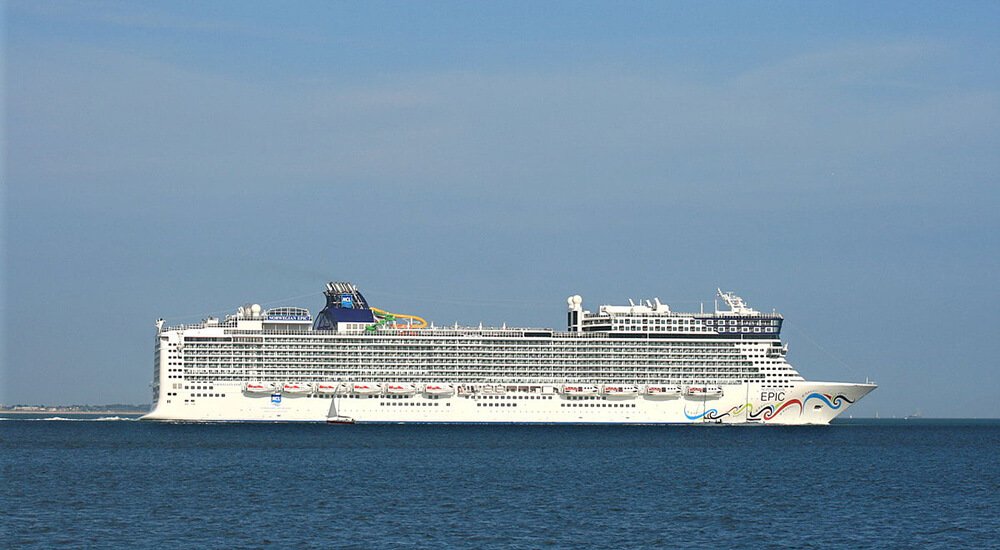Live AIS Marine Traffic and Vessel Tracking in the UK
MarineTraffic has already been acknowledged as vessel tracking service worldwide. The project is open and community-based, it provides actual time data about the ships, their current movements, and locations. You can find out which port or harbor the vessel is at the right moment. The users can check the following details about the craft as well:
Place of production
- Dimensions
- Gross Tonnage
- IMO No. — International Marine Organization number.
Video
Being an open-source project, Marine Traffic allows the users to submit the photos of the ships and to rate the images uploaded by the other users.
The service offers the 2 options of using it for free or for a fee, the second one offers more advanced functionality.
How it works with AIS
The information on the official site of Marine Traffic project is provided by several thousand of volunteer Automatic Identification System (AIS) stations, situated in more than 140 states worldwide. The crafts also have AIS equipment and transfer the data by means of ship radar to the central servers of MarineTraffic. The following details are submitted from the vessels — unique identification number, its course, current position, speed. Maritime World extensively uses the AIS ship tracking – automated system, which allows electronically exchanging craft details and the information about their position between the specialized AIS stations.
The AIS principle of work is as follows: the receiving stations are united in a network and gather data from various sources sharing it with the central database of MarineTraffic. Any ship having the appropriate equipment emits the data, which can be captured by AIS Marine Traffic receivers within the corresponding range. The data is encoded and decoded in a special way and it falls into three major categories: Dynamic, Static, and Specific.
A great amount of AIS Marine data is constantly received and produces by the central database of the project. The most significant details are stored as well as geographic information on various ports and territories, crafts’ images, and other essential details.
The users are offered a live map online and multiple other dedicated pages to find the data they need. The live map displays the current position of the crafts and allows tracking the ship you are interested in. Special pages are devoted to Vessel Details, Port Conditions, Statistics, and Positions History.
AIS tracking allows identifying the ship location in near real-time due to the fact that the data transmitting, receiving, processing, and decoding are realized in no time.
![]()
How to use Marine Traffic AIS tracking
Below you can find the live map, which has quite a user-friendly, intuitive interface. You can zoom in and out the map and adjust the view as it’s most convenient for you. It’s not a problem to learn how to use the ship tracker, especially if you have worked with maps already. Even without this experience, you will face no problems dealing with this vessel tracker.
The easiest way to find a ship in case you know its name is to use the map search. It allows finding the necessary vessel immediately, you can also find the port you want to or go to a certain area. The drop-down list of 50 areas is available to make your search quick and easy.
The map has several layers you can watch Simple, Standard, Satellite or OpenStreet Map Views.
The marine tracker allows seeing the following types of vessels on the live map:
| Ship types | On the way | Anchored |
|---|---|---|
| Cargo Ships | ||
| Tankers | ||
| Passenger Vessels | ||
| High-Speed Crafts | ||
| Tugs & Special Crafts | ||
| Fishing Vessels | ||
| Pleasure Crafts | ||
| Navigation Aids | ||
| Unspecified Ships |
Each vessel type on the map works as a separate filter. You can choose one category you need or tick several craft types, switching off all the rest. You are free to study the whole map with all the available details and options as well.
Video — How to use filters
In addition to Vessel Filters, you will find the following:
All these options can be adjusted — Ports, Stations, Lights and AtoNs, Photos as well as Vessel Names and Projected Course (30 min). You can either tick the ones you are interested in and switch them on, or choose not to show the unnecessary details.
When clicking on any Port or Navigation Aid you’ll see a pop-up window with additional info on the object, even more, data can be gained after clicking the button “details” in the pop-up window opened.
A new opened tab will show you the main information on the navigation aid and provide you with the following port details: Country, Flag, Latitude, Longitude, local time, etc.
In the free mode you can spot the vessels’ location real-time, for more information, you will be asked to provide some payment.
Use this ship tracker for free or pay for more data

In this section, we are going to provide you some more details on free and paid options for the site usage.
In case you do not need to track shipment for some professional purposes, the free account will most likely meet all your needs.
In a free mode, you can search for vessels and ports, go to a certain area or check some location. It also allows using vessel filters according to a craft type, exploring ports, small ports, stations, lights and ATONs, checking the projected ship course and choosing your custom area. You can also see the main wind barbs with the indication of their direction and air temperature at a certain moment (the time is indicated).
In case you want more you can choose additional paid options. For about 15 USD per month, you will be able to see much more information about the vessels. It will give you the opportunity to apply the Filters based on the following criteria: capacity, load condition, destination, current status, and some more. More map layers will be available – such as ECA, Daylight, and Timezones, you will also get customizable crafts icons. Due to the Live Map auto-refresh and full-screen functionality, you will be able to be better aware of the real-time situation at any moment.
For about 16 USD per month you can gain access to vessel positions and weather information — combined, 22 Weather Map key metric layers will be at your disposal. However, it’s not all switching between Wind, Wave, Sea State, and Atmospheric Layers you will get the visualization of the current and forecast weather condition. In such a way you can get an accurate overview of possible hazards and delaying factors. Being aware of the weather conditions and forecast you can ensure craft and crew safety and alter sailing routes to optimize them.
A monthly payment of 37 USD will allow you to get more detailed Voyage Data, Package Light. The information of this section and the specialized tools reveal the details of the past voyage and vessel position for the 30 previous days; provide the real-time and port of departure, current speed, and the estimated arrival time and port of destination, the shipload condition, and current status. The Package Plus for 69 USD per month, will provide you with the opportunity to check the past voyage and position details of any given vessel in course of the previous year.
A bit more than 58 USD provides access to Port Congestion charts for weekly activity over the last 3 months or even one year. Thus, you can identify rising congestion at ports, overall market trends, predict how quickly the vessel of a specific market and size class is served at a given port, estimate port performance based on waiting and operational times.
For 105 USD you can see the world. Speaking seriously, you will be able to see the most recent satellite positions, over 12 hours old, and follow the global fleet. For the undelayed service, you will have to pay about 190 USD.
All the prices mentioned above are valid for an annual payment if you want to pay on monthly bases the payment will be about 12% more.
However, each of the paid options can be tried for free after the registration on the site. If you are simply interested in how it works, go for it. Anyway, for the regular use, the free version is more than enough.
Video — How to take all opportunities, a step-by-step guide
Who uses this vessel tracker?
Lots of people are interested in ship AIS service, Marine Traffic site has above 6 million unique visitors every month and more than 1,1 million registered users. People use the website for their private or business needs.
The majority of those who use the present ship locator at the most basic level are ship spotters, hobbyist, and crew members’ families, who want to follow live the ships of their loved ones.
For business needs the site is used by multiple companies worldwide. Being a perfect research tool for various needs it is used by NGO’s, media organizations, traders, manufacturers, and Governments as well.
The data received from the tracker may help in understanding global demand and supply tendencies, markets, competitor analysis, and tracking.
The experts of the shipping industry use it to monitor the global fleet and their own ships, as well as for business prospects identification. For emergency response teams it is a source of situational information and awareness in the emergency cases.




